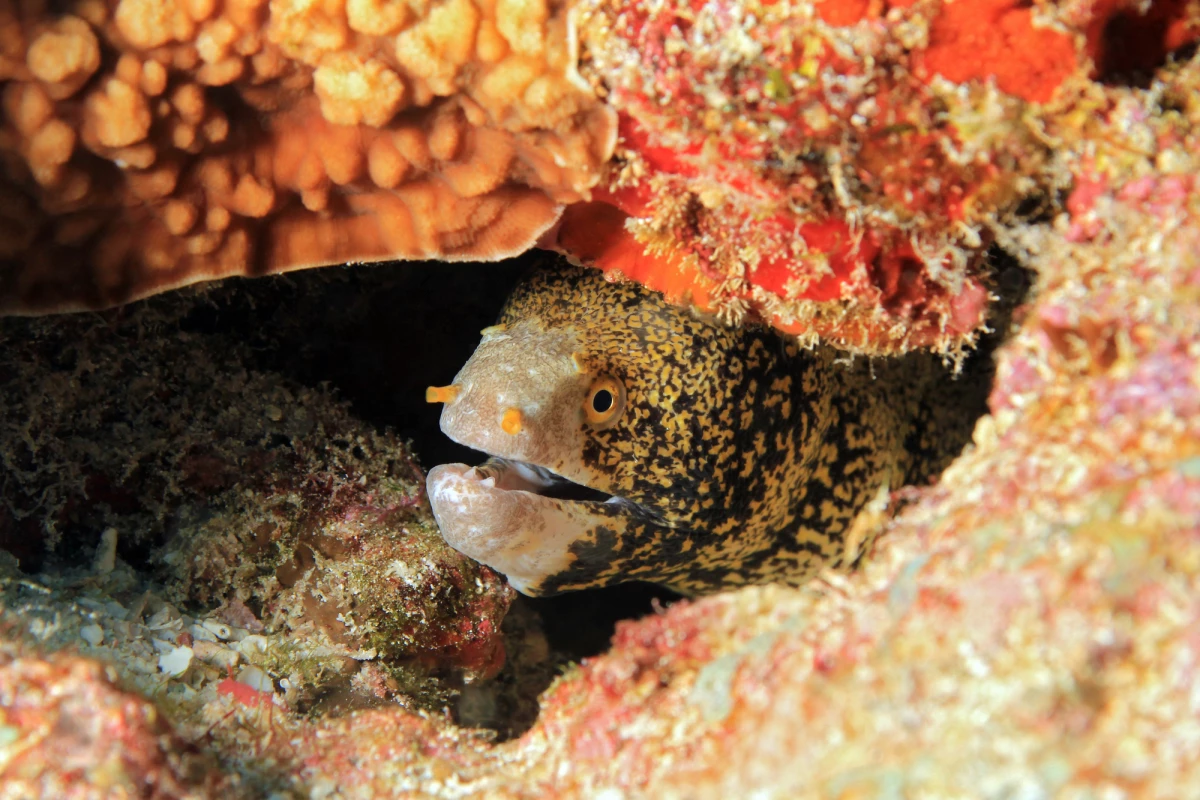Most fish utilize a mouthful of water to swallow their prey. According to a new study, however, moray eels are unique in not doing so, allowing them to feed while out of the water … with some help from a second set of jaws in their throat.
Ordinarily, predatory fish draw prey into their mouth and down their gullet by sucking in water as they open their mouth. It's an effective setup, but it does limit them to feeding underwater.
That said, there are reports of snowflake moray eels coming out of the water along the shoreline, where they capture and swallow crabs. Assoc. Prof. Rita Mehta, an evolutionary biologist at the University of California - Santa Cruz, set out to investigate how this was possible.
Back in 2007, Mehta described how the eels utilize a secondary set of extendable jaws to swallow prey while in the water. Known as pharyngeal jaws, they're located inside the throat, behind the primary set of oral jaws in the mouth. When the eel grasps a prey item in those oral jaws, the pharyngeal jaws move forward within the throat, latch onto that item, then pull it back into the esophagus.

In order to see if that same mechanism allows the eels to feed while out of the water, Mehta and colleagues spent five years training seven captive snowflake morays. Ultimately, the animals were able to slither up a ramp and out of the water, where they grabbed and swallowed a piece of fish before returning to the water.
This confirmed that snowflake moray eels are the only fish known to be capable of consuming prey without using water for suction. Even the amphibious mudskipper fish, which does swallow prey on land, is only able to do so utilizing water stored in its mouth.
"This is the first example of a fish that can feed on land without relying on water," says Mehta. "As a result, these particular morays can utilize very different environments for food resources."
You can see one of the performing eels doing its thing, in the video below. The research is described in a paper that was recently published in the Journal of Experimental Biology.
Source: UC Santa Cruz





